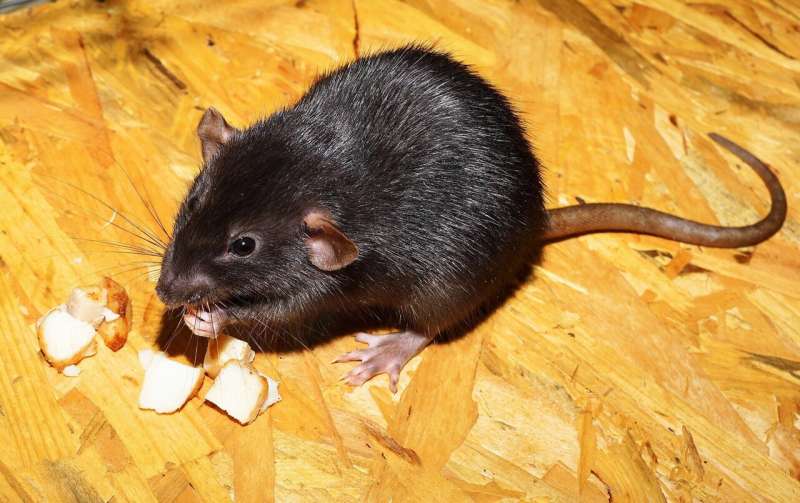This article has been reviewed according to Science X's editorial process and policies. Editors have highlighted the following attributes while ensuring the content's credibility:
fact-checked
proofread
Invasive alien species biggest threat to biodiversity and livelihoods in Caribbean, according to new field guide

Invasive alien species (IAS) explored in a CABI-published book pose the biggest threat to biodiversity, crop and/or livestock production, human and/or animal health, and economic development in the Caribbean.
These include rats, cats, mongooses and monkeys as part of a list of 171 exotic, non-native, non-indigenous or foreign animal species detailed in the 402-page "Guide to the Alien and Invasive Animals of the Caribbean," by Dr. Arne Witt, CABI's Invasives Coordinator, South.
Invasive alien species have been implicated in 86% of island species extinctions since 1500 A.D. Alien species are the most common threat associated with extinctions in native amphibian, reptile, and mammal species. In fact, introduced rats and cats have been responsible for most bird and mammal extinctions on islands.
Introduced species have not only driven native species to extinction, but they have also had a significant impact on food production. At a global level, pests, many of which have been introduced, reduce yields by between 20 and 40%. Invasive insects cost the global economy about US $70 billion per annum. Many of the worst crop pests in the world are established and thriving in the Caribbean.
Invasive species can also affect human health in several different ways, either as introduced pathogens or as vectors of diseases and parasites. In fact, the global health costs directly attributable to invasive insects exceed US $6.9 billion per year.
These impacts are not new. It is postulated that an invasive species, that is the introduced black rat, contributed to the demise of around 200 million people in Europe between 1347 and 1351. The black rat is a host of fleas which can carry the bacterium Yersinia pestis which causes bubonic plague.
171 exotic, non-native, non-indigenous or foreign animal species
The guide, which is co-authored by Professor Mike Picker, of the University of Cape Town, South Africa, and Dr. Kirsty Swinnerton, from the Kent Wildlife Trust, UK, provides detailed descriptions and information on the impacts of invasive taxa from mammals to insects. It also provides a review of the advantages and disadvantages of different management interventions.
Species covered include thehouse sparrow (Passer domesticus), red-eared slider (Trachemys elegans), cane toad (Rhinella marina), red lionfish (Pterois volitans), Savigny's brittle star (Ophiactis savignyi), pink hibiscus mealybug (Maconellicoccus hirsutus) and the Atlanic blue crab (Callinectes sapidus).
Prevention, early detection and rapid response (EDDR) and control
Dr. Witt, Professor Picker and Dr. Swinnerton outline in the guide that to be effective, all invasive alien management strategies need to consider activities relating to prevention, early detection and rapid response (EDDR) and control.
In the introduction they highlight the benefits of various interventions. Islands from which introduced mammals have been eradicated have seen a dramatic increase in the diversity and abundance of plants, insects, mammals and especially birds. The guide highlights the fact that invasive vertebrate eradication on islands has probably contributed more to biodiversity conservation globally than any other intervention.
Dr. Witt said, "This guide has been developed to help address one of the barriers to effective IAS management, which is the lack of information on the presence, impact, and management of invasive animal species in the Caribbean. It is by no means a comprehensive guide, and does not necessarily cover all of the worst species, but is an attempt to highlight the range of alien species present in the region and their impacts."
One of the world's greatest centers of biodiversity
The Caribbean region is one of the world's greatest centers of biodiversity; home to a myriad of species that are found nowhere else on earth. It includes about 11,000 species of plants, of which 72% are endemic or unique to this hotspot.
Endemic vertebrates include all of the 189 species of amphibians present in the Caribbean; 95% of the 520 reptile species; 26% of the 564 bird species; and 74% of the 69 species of mammals, mostly bats. Species endemic to this hotspot represent 2.6% of the world's plant species and 3.5% of the world's vertebrate species.
More information: Arne Witt et al, Guide to the Alien and Invasive Animals of the Caribbean, (2024). DOI: 10.1079/9781800627598.0000
Provided by CABI



















